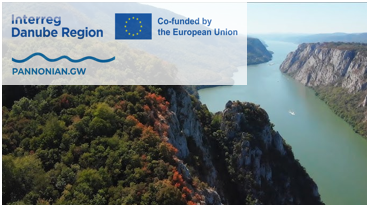Harmonisation of joint monitoring and modelling of groundwater system of Pannonian Plain
Principal Investigator at ZRC SAZU
Žiga Kokalj, PhD-
Original Title
Harmonizacija skupnega monitoringa in modeliranja podzemne vode v Panonski nižini
-
Acronym
Pannonian.GW
Project Team
Žiga Kokalj, PhD, Nejc Čož, PhD-
Project ID
DRP0401124
-
Duration
1 September 2024–31 August 2025 -
Project Leader
-
Financial Source
European Commission

Partners
Ludovika University of Public Services, Hungary, Research Center of the Slovenian Academy of Sciences and Arts, Slovenia, National Institution of Hydrology and Water Management, Romania , Subotica Tech -College of Applied Sciences, Serbia
Shallow groundwater is directly recharged by precipitation and other water balance components. Global pattern of water table depth provides vital support for terrestrial ecosystem by sustaining river base flow and soil water balance in the root zone. According to scientists (Fan et al, Science 339, 2013) shallow groundwater influences 22 to 32% of global land area, including app. 15% as groundwater fed surface water features and 7 to 17% with the water table or its capillary fringe within plant rooting depths.
Lowland regions of Danube countries: Hungary, Croatia, Serbia, Slovenia, Romania, Slovakia and Bosnia and Herzegovina belong to the Pannonian Plain - large alluvial region surrounded by Alps, Carpathian Mountains and Dinaric Alps. All countries of observed region have more or less dense network of observation wells but there is no connection between fragmented monitoring systems. It is characterized by large portion of agricultural area with dense drainage network and rich ecosystem in grassland, wetland and forests. Its area is app. 200.000 km2.
The only possible way of groundwater analysis is through transnational approach. Due to the fact that many countries share this large valley there are administrative limitations which obstruct access to whole spatial aspects of natural characteristics and present processes. Patterns in water table depth explain patterns in wetlands at the global scale and vegetation gradients at regional and local scales. This project will present global observations of water table depth compiled from national data basis and connect them to be representative and harmonised transboundary basis for further activities. The basic hypothesis is existence of groundwater lowering mainly caused by climate change impacts. This problem was detected in some other European regions and partially in countries in the Danube River basin (Romania, for example) and published in scientific publications. The main outputs of the project are: Report on the state of play in the field of monitoring shallow groundwater system, including description of the existing gaps in observation wells network which will be addressed by the new initiative of joint approach to the problem and description of the target groups addressed by the future project and their needs. Groundwater level maps are included (i); Main project work plan, containing work plan, describing activities, outputs and expected results of the main project, including potential partners and indicative budget of the main project (ii) and Report on funding possibilities, presenting the analysis of funding sources for the main project and defining steps to be taken after the seed money project is finalized (iii).
Projected warming in the 21st century anticipates more or less significant changes in precipitation pattern, including less snow during winter periods and shifting in the timing of runoff. This will effect spatial variable changes in the timing and quantity of groundwater recharge. In order to develop mitigation platform transnational approach is essential for understanding trends in groundwater systems and undertaking initial steps for future activities.
